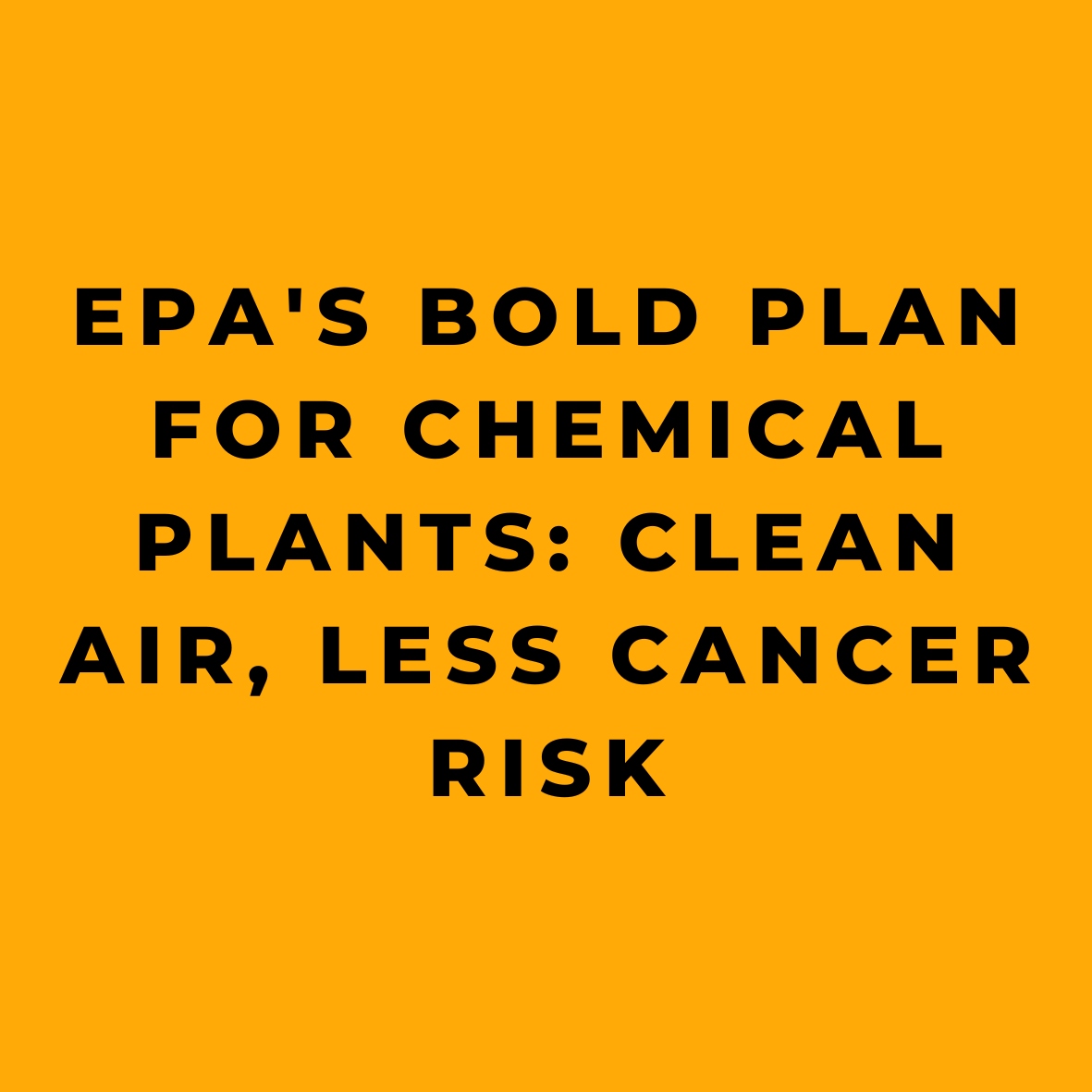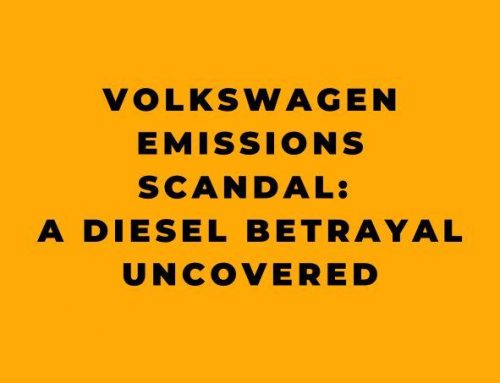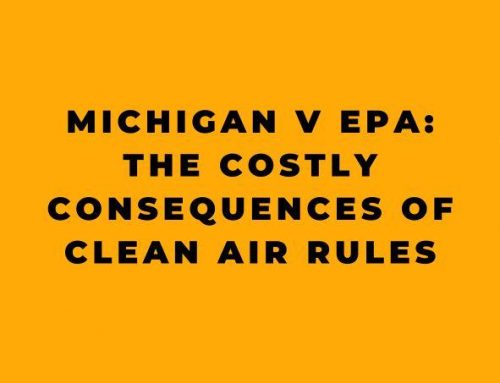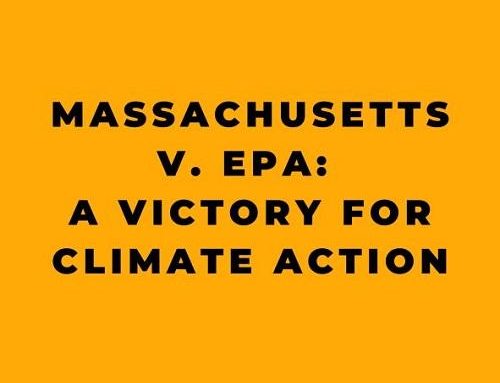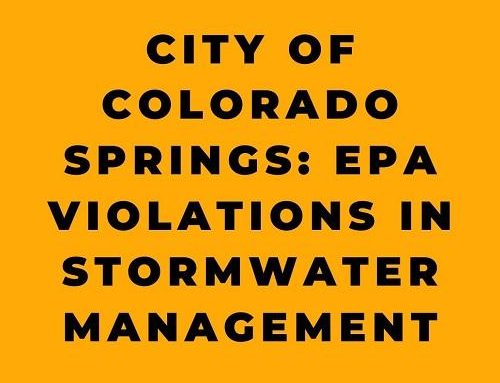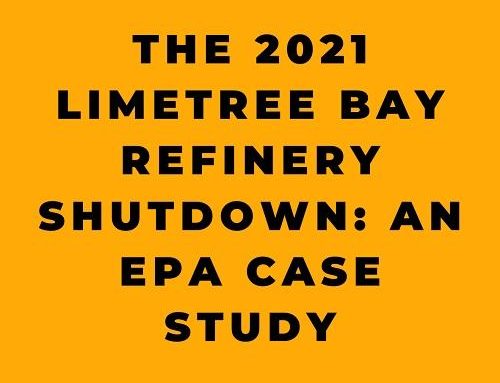I’ve got some news to share with you today that will make your day a little brighter. You see, the good folks over at the U.S. Environmental Protection Agency (EPA) have been working up a storm to clean up the air we breathe. And let me tell ya, they’ve come up with a doozy of a proposal that’ll make the air around chemical and polymers plants a whole lot cleaner.
Now, I know what you’re thinking—chemical plants ain’t exactly a barrel of laughs. But, they’re a necessary part of our modern world, and they’ve been churning out all kinds of useful stuff for years. The trouble is, some of these plants have also been churning out some not-so-nice stuff that’s been wafting into the air and causing all kinds of health problems. I’m talking about hazardous air pollutants like ethylene oxide (EtO) and chloroprene—chemicals that are highly toxic and can increase the risk of cancer.
Well, the EPA isn’t sitting around twiddling their thumbs, no sirree. They’ve announced a proposal that’ll significantly reduce these hazardous air pollutants from chemical plants. The goal here is to dramatically reduce the number of folks with elevated cancer risks in communities surrounding these plants, especially communities that have been historically overburdened by air toxics pollution. And we’re talking about cutting more than 6,000 tons of toxic air pollution a year, which is a mighty big number if you ask me.
Now, this proposal is part of a bigger effort by President Biden to end cancer as we know it. It’s called the Cancer Moonshot, and it’s all about securing environmental justice and protecting public health, including for communities that are most exposed to toxic chemicals. Administrator Michael Regan, the head honcho over at the EPA, made the announcement down in St. John the Baptist Parish, Louisiana. That’s one of the communities he visited back in November 2021 on his Journey to Justice tour.
Regan said, and I’m paraphrasing here, that for generations, our most vulnerable communities have been bearing the burden of breathing unsafe, polluted air. He talked about his visit to St. John the Baptist Parish and how he pledged to prioritize and protect the health and safety of folks living in the shadows of chemical plants. He’s proud that this proposal will help deliver on that commitment and protect folks from toxic air pollution all across the country—from Louisiana and Texas to Kentucky, West Virginia, and Ohio. ‘Cause every child in this country deserves clean air to breathe, and the EPA is gonna use every available tool to make that vision a reality.
Now, you might be wondering how they’re gonna do all that. Well, the EPA’s proposal is gonna update several regulations for chemical plants, including those that make synthetic organic chemicals and polymers like neoprene. These updates are gonna reduce a whopping 6,053 tons of air toxics emissions each year. And that includes reducing ethylene oxide emissions by 58 tons per year and chloroprene emissions by 14 tons per year.
They’re also looking to reduce other air toxics like benzene, 1,3-butadiene, ethylene dichloride, and vinyl chloride. Plus, they’re aiming to reduce emissions of smog-forming volatile organic compounds by over 23,000 tons a year. That’s a whole lot of cleaning up, if you ask me.
Now, here’s the kicker. The EPA isn’t just trusting these facilities to do the right thing on their own. They’re gonna require facilities that make, store, use, or emit chemicals like EtO, chloroprene, benzene, and others to monitor the levels of these air pollutants right at the fence line of the facility. That means they’ll be keeping a close eye on what’s going into the air right where it counts. And if the annual average air concentrations of these chemicals are higher than a certain action level, well, the owners and operators are gonna have to get off their rockers and find the source and make the necessary repairs. For EtO, the EPA is proposing an action level of 0.2 micrograms per cubic meter of air, and for chloroprene, it’s 0.3 micrograms per cubic meter of air.
Now, I know some folks are worried about all this information being kept under wraps, but the EPA’s got a plan for that too. They’re gonna make all this monitoring data public through their WebFiRE database tool. That way, communities can see for themselves what’s going on and hold these facilities accountable. It’s based on similar requirements they’ve been using for petroleum refineries, and it’s been working like a charm for identifying and reducing emissions of benzene for more than four years.
So, what’s the upshot of all this? Well, the EPA says that this proposal is gonna reduce cancer risks from breathing in toxic air pollutants that come from the specific processes and equipment covered under the rules. And these pollutants are linked to some pretty nasty stuff, including lymphoma, leukemia, breast cancer, and liver cancer. They also expect the proposal to benefit the young’uns, who are more susceptible to the effects of EtO and chloroprene.
Now, the EPA did some fancy calculating with a first-of-its-kind community risk assessment, and they reckon that the number of folks with elevated cancer risk could drop by a staggering 96 percent in communities surrounding chemical plants if this proposal gets the green light. That’s a big win for folks living near these plants and a big step towards cleaner air for everyone.
But the EPA ain’t resting on their laurels. They know there’s more work to be done, especially when it comes to EtO, which is the biggest driver of the remaining risks. In the coming weeks, they’re planning to announce proposed updates for commercial sterilization facilities that emit EtO, and they’re working on rules for other sources of EtO, including polyether polyols production, hospital sterilizers, and smaller chemical manufacturers known as “area sources.”
Well, folks, that’s the lowdown on the EPA’s proposal to clean up the air around chemical and polymers plants. It’s a big step forward, and it’s sure to make a difference for communities all across this great land of ours. So, let’s tip our hats to the EPA for their hard work, and here’s hoping that we’ll all be breathing a little easier in the years to come.
That’s all for now, folks. Until next time, keep breathing easy and taking care of each other.
References:


